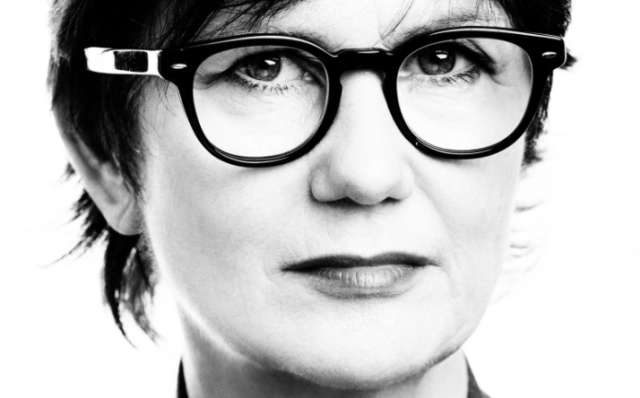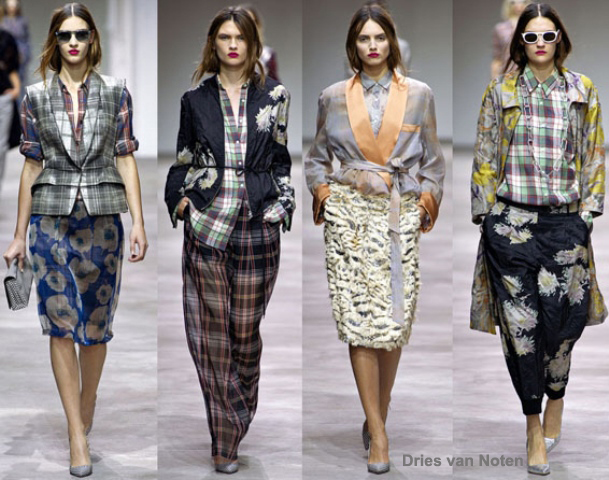Linda Loppa. Style & Talent














The Antwerp Six refers to a group of influential avant-garde fashion designers who graduated from Antwerp‘s Royal Academy of Fine Arts between 1980-1981. At the Academy they were taught by Linda Loppa
Every human being is born with a certain amount of creative talent. Whether this divine spark is snuffed out in the course of a person’s life or stiked into a creative fire depends on many different factors.
If you’ve watched a child at play, you’ve seen a live performance of talent at work. But as a rule, the creativity and imagination that children have abundance is no longer available to us after we grow up. It can thus be said that nearly every human being is born with a certain amount of creative talent. In many cases, this talent disappears during the process of growing up; for most people, this happens during puberty and in the early teenage years. In all likelihood, many people are conditioned by rules imposed the by society.
In the schools, creative behavior and outright rebellion are often punished. Teachers generally prefer to silence pupils who rebel. In the arts, taboos are set aside. Instead of the ususal hierarchies there tends to be open and spontaneous. They are stimulated and encouraged to express their emotions, and many young people that amounts to a revelation.
Talent needs to be nurtered at an early stage; if this nurture is lacking, the talent will gradually wither away. The myth of the unique talent that triumphs over the greatest adversities without any outside supportis borne out by reality in only the rarest of cases. We need to give talent the careful treatment it deserves and learn more about how it can be identified and nurtured.
Some young people are lucky enought to find early on a estructure that supports, guides and confirms their form of self-expression. Some receive assistance from creative parents. Schools of fashion and design have also developed into deesbeds for nurturing individual creativity that in many cases has not yet found its own direction. Fashion can be a wonderfuil medium of self-expression. Many people find reality difficult to accet. Tha’ts why we need people whi have a feeling for creativity and the ability to stimulate and guide it.
This is where a teacher’s work begins. This teacher must enter the world of the young designer. The teacher/student relationship is one in which knowledge is transferred. He or she provides feedback, expresses his or her perception and opinion of the student’s work, and continually asks basic questions about the student’s drawings, designs or finished products. All of this happens in a process of dialogue. The teacher says what he or she is seeing, and thus helps the student to make decisions.
The teacher’s experiences are important, because they make it possible to recognize the merit of a student’s work at an early stage and guide it without forcing it to accept an alien perspective. This continuing dialogue, this confrontation with creative work in all its details, strengthens the personality of the creative individual and prepares it to deal with criticism.
There is a kind of boundary stone, an imaginary milestone that has to be passed. Nobody, not even you yourself, can force you to pass it. It’s very valuable experience to find out the limits of your own talent, and I recommend doing it as early as possible. In the case of some students, this obstacle releases another surge of decisive action that carries tham over and above the obstacle.
Taste is another category altogether, and it basically has nothing to do with creativity. Taste cannot always be evaluated. Craft and taste go hand in hand. If a product like an item of clothing is wellmade, even bad taste can become interesting. Talent carries with it the drive to innovate,and innovation does not always receive recognition. Sometimes people reject eccentricity. Taste is a matter of agreement that is based on education, emotion and culture. It can’t always be measured, but quality is measurable, and this means that taste and quality have to harmonize.
Linda Loppa . She is the director of the department of Fashion of the Royal Academy of Fine Arts, institution where she studied fashion design and where he has taught since 1981 , much of the international success they have reaped the Antwerp designers since they owe more ten years . Loppa has taught the craft to a large number of successful designers . This probably has to do with the fact that Loppa knows all facets of the fashion business . Worked as a designer , as purchasing agent menswear and was the first to sell in Belgium from the 70 Italian and French avant-garde fashion . Loppa Linda is a founding member of the Flanders Fashion Institute ( FFI) and Deputy Head of the Fashion Museum , Momu opened in September 2002. Organizes Here , paralemente teaching at the Academy and lectures in world fashion capitals , for example, the exhibition ” a Geography of Desire” of the guest curators Philippe Pirotte and N’Gone Fall .
We invite you to see the vídeo: Are you ready for change? Linda Loppa.
Links fotos:
http://wandkarlo.blog.com/?p=998
Veronique:
http://www.fashion156.com/collections/veronique-branquinho-paris-fashion-week-aw13/
Bernhanrd
https://montag73.wordpress.com/2013/11/12/
Dries Van noten
http://www.stylehasnosize.com/tag/haider-ackermann/
http://carlotajantus.blogspot.com.es/2013/06/dries-van-noten_11.html
Stephan Schneider
http://thekey3d.wordpress.com/about/
http://www.style.com/stylefile/2010/02/the-belges-of-the-ball/






















This entry has 0 Comments